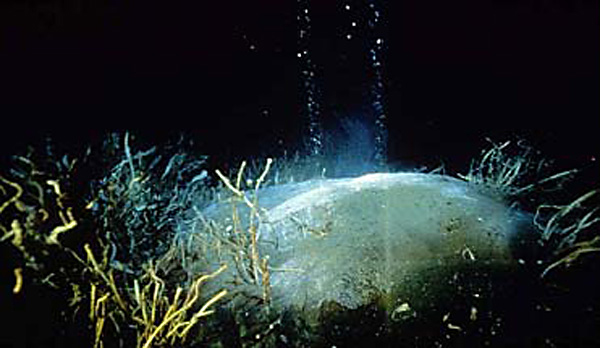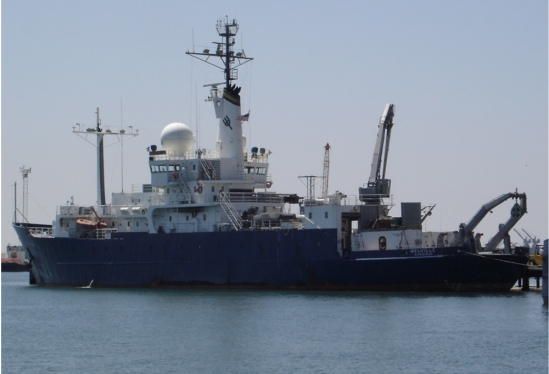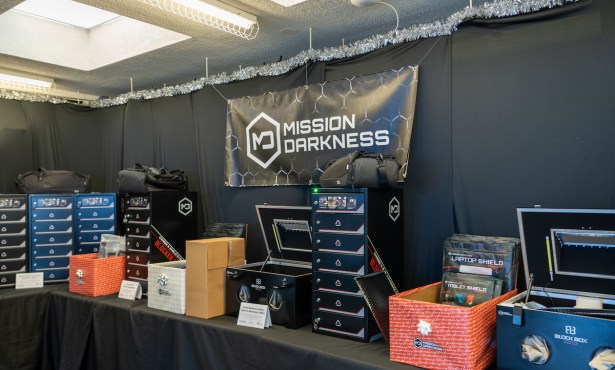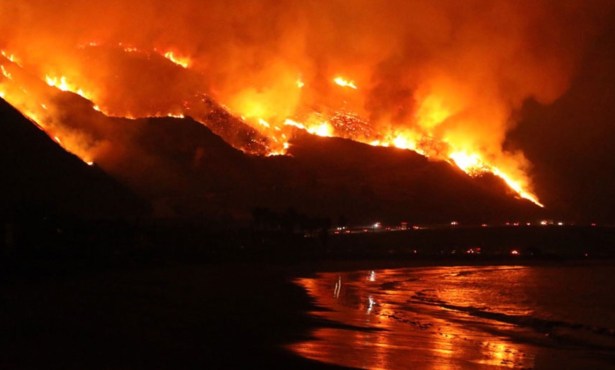Warming Icy Methane Adds to Greenhouse Effect
Channel Core Studies Link Methane and Ancient Glacial and Warming Events

In an amazing feat involving time, location, and tectonic uplift, UCSB scientists pulled up a core sample from below the Santa Barbara Channel that gives the first detailed look at an ancient period of significant global climatic change, one that holds parallels to today’s warming oceans. Methane bubbling up from defrosting methane hydrates under the sea — with an ability to warm the atmosphere 86 times as much as carbon dioxide — likely played a significant role in this climate warming in millennia past, posits their paper, published in Paleoceanography recently. Among the core samples recovered by UCSB geo-scientists James Kennett, Craig Nicholson, Christopher Sorlien, and their colleagues — taken from a very deep and old piece of the Earth brought upward by tectonic uplift — was one that held distinct layers from an important period of transition in the global climate cycle. And it could be dated accurately — no mean feat for pieces of earth hundreds of thousands of years old.

Using arcane methods understood only by scientists like Kennett — a professor emeritus of marine geology, paleoceanography, stratigraphy, micropaleontology, and paleobiology — Nicholson — a research geophysicist at the Marine Science Institute — and Sorlien — a structural evolution geologist with the Earth Research Institute — that involved identifying and comparing carbon and oxygen isotopes in the microfossils embedded in the core sample, the researchers found that the ocean warmed more quickly than previously surmised, possibly when methane plumes would surface after methane hydrates (or methane frozen solid) buried on the ocean margins destabilized into methane gas as sea levels lowered, underwater pressures decreased, and the ocean started to warm.
As well as fascinating details like the fact that the four-meter core sample happened to contain ash from a well-documented volcanic eruption in Yellowstone (which allowed accurate dating of this core) and that it recorded a 4,000-year period during the first warming swing in what would become a 100,000-year-long cycle back to glaciation (the periods had been shifting from 41,000-year cycles for a half-million years or so), this chunk of sea bottom showed that an ocean as vast as the Pacific could warm by 4-5°C in fewer than 50 years. Climate scientists have assumed such a phenomenon could only be accomplished over thousands of years. Instead, the core sample showed that temperature jumps occurred several times, and rapidly, over less than 700 years.
The methane emissions from the Santa Barbara basin alone were not large enough to effect climate change, Kennett noted, but the Santa Barbara sample reflects broadly what was happening along the ocean margins. “The sedimentary record of climate and ocean change in Santa Barbara basin is one of the finest, if not the finest, known for the entire world ocean,” he stated, adding that the fidelity of that record is why “we now know that global climate at times changed on a dime in the past. … The records we produce never cease to surprise.”
Younger basin findings here match those of ice core records from Greenland, Nicholson explained. And the channel contains an influx of waters from sub-polar and sub-tropical regions of the Pacific. This rich mix makes for both a highly varied marine life zone and one sensitive to climate change, serving up abundant, well-preserved microfossils that enabled the team to assess whether the carbon they held came primarily from carbon dioxide or methane, and also what the temperature was when the microfossils were growing.
Nicholson pointed out that recent studies off the continental shelves of Oregon and Washington have revealed methane hydrates (or clathrates) gassing off plumes of methane. The hydrates have destabilized with only 0.3°C of recorded warming. Russian and Swedish studies offshore Siberia are showing methane emissions surfacing in shallower waters, added Kennett. Globally, methane hydrates held in wetlands and permafrost had been considered to have the major potential to affect climate change. However, the immense stores of methane hydrates in the oceans — estimates vary from 500-2,500 gigatonnes, said Nicholson — could lead to a powerful feedback loop in which the methane released from the warming waters causes the air to heat up a bit more, as would the ocean, which releases more gas from melted methane hydrate, and on and on.
The mind-boggling lengths of time involved and the dire quality of the obvious outcomes at hand could lead to the plaint: Isn’t this just part of the natural climate cycle? What’s different, Nicholson answered, is that atmospheric carbon dioxide has risen beyond its normal 1:1 correspondence with temperature. However long it takes to get all this CO2 sequestered again in plants, animals, soil, and water, the effect on global temperature, along with the likely increase in methane, means rapid heating, similar to what’s documented in the Santa Barbara core, could be on its way. “Do we really want to run this experiment?” Nicholson asked.



